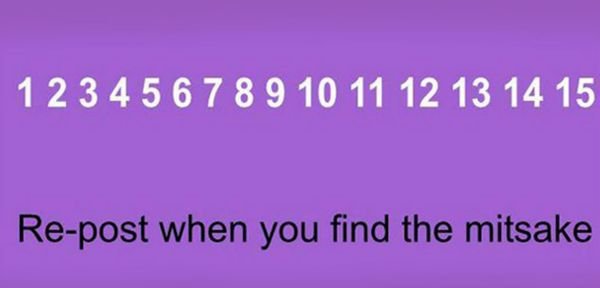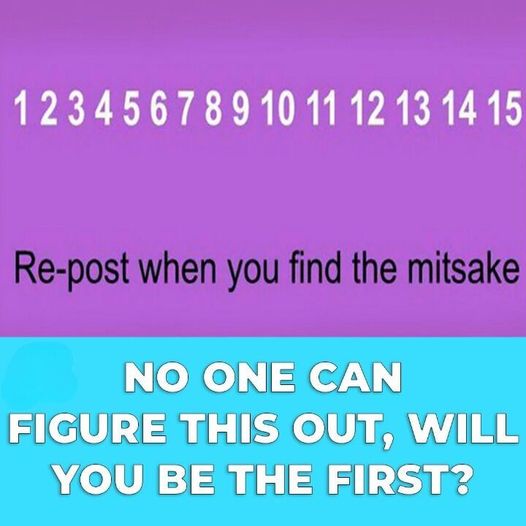Puzzles have been a beloved pastime for many years, engaging minds young and old. They vary widely in difficulty—some are solved in moments, while others can take weeks, months, or even remain unsolved indefinitely.
Everyone has their own opinion on puzzles—some people can’t stand them, while others truly enjoy the mental challenge. Yet, regardless of where you stand, there’s no denying that solving puzzles is an excellent exercise for the brain. They encourage us to think from different perspectives and strengthen our problem-solving skills.

One particular puzzle making the rounds online has been baffling many. At first glance, it doesn’t seem much like a puzzle. It’s a simple image showing numbers from 1 to 15 in sequence, with a caption below asking viewers to repost once they spot the error. It sounds straightforward, doesn’t it?
But when you look closer, you don’t see any errors. The numbers are all there, perfectly arranged from one to fifteen with nothing out of place. Naturally, you double-check, maybe even triple-check, the numbers—everything seems fine. There are no missing or incorrectly written numbers. The sequence is flawless.
You might begin to overthink it. Perhaps the mistake is the absence of the number zero, or maybe the sequence should include sixteen. Maybe something is off with the spacing? But the spacing is just right. Is there a hidden number? Maybe that 1 looks like an I? But no, they’re all ones. Could the 6 be oddly shaped? But no, it’s also perfect. So, what’s the error?
Eventually, you might decide to read the caption more closely rather than focusing solely on the numbers. That’s when you notice something: you’re asked to find the ‘mitsake’—not the




